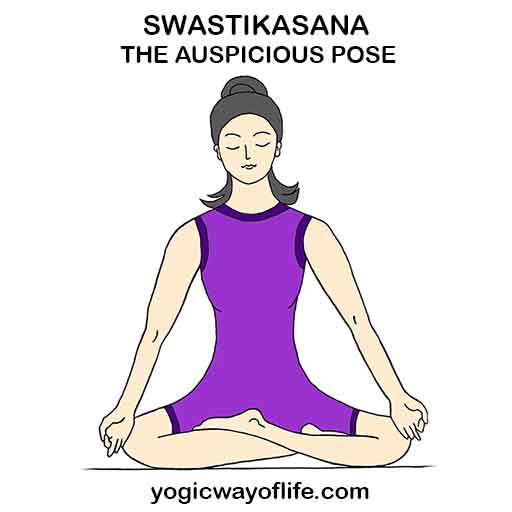Swastikasana or the Auspicious Pose is an easy meditation pose for those who cannot attempt the more difficult asanas like Padmasana and Siddhasana. The India symbol of Swastika is a symbol of auspiciousness. In Swastikasana, the position of the legs resemble the symbol of the Swastika. The word Swastika comes from the Sanskrit root words – ‘Su’ meaning good, ‘Asti’ means ‘to be’ or ‘existence’ and ‘Ka’ means to make. This asana can be described as one that helps to realize the unity of existence.
Swastikasana is relatively easy to perform and can be used for meditative purposes and for prolonged sitting.

How to do Swastikasana (The Auspicious Pose)?
- Sit on the floor with legs spread out in front of you.
- Fold the left leg and place the sole of the left leg against the inner thigh of the right leg.
- Bend the right leg and place the right foot in the space between the left thigh and calf muscles.
- Grasp the left foot by the toes and pull it up and place it between the right calf and thigh.
- The knees should firmly touch the floor.
- Adjust the pose so that you feel comfortable.
- Keep the body and trunk straight.
- The hands can be placed on the knees in any of the classical meditation mudras like Chin mudra or Jnana mudra.
- Awareness can be maintained on the breath. One may also concentrate on the tip of the nose or the eye brow center depending on the type of meditation technique.
Benefits of Swastikasana (the Auspicious Pose)
- Swatikasana is a good meditation pose for those who find it difficult to sit in more classical poses like Padmasana and Siddhasana.
- Even those suffering from varicose veins and aching leg muscles can sit in Swastikasana.
Contraindication for Swastikasana
- Swastikasana should not be done by hose suffering from sciatica and sacral infections.
